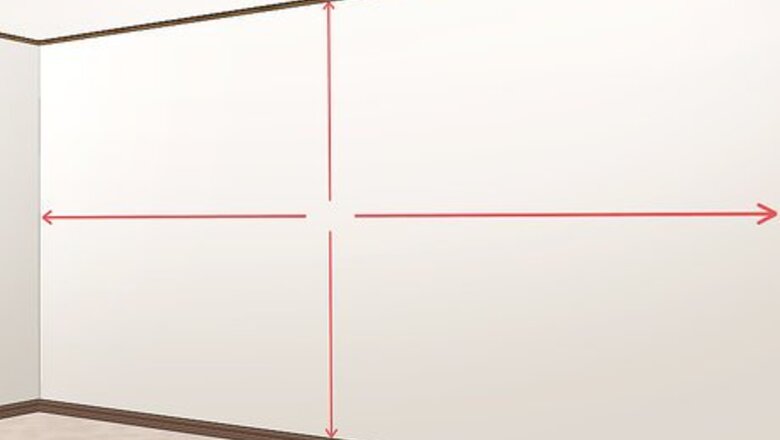
views
Measuring your Rooms
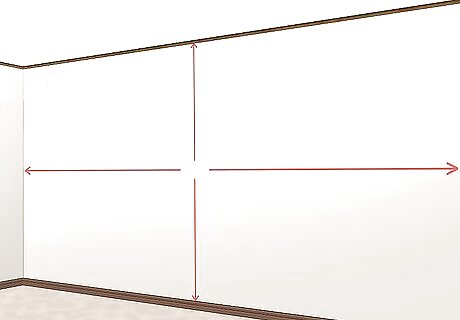
Measure the width and the height of your walls. You can measure from the ceiling down to the floor and across each wall to quickly get a height and width measurement. Using a metal tape measure rather than a soft cloth one will help keep your numbers accurate. Writing them down as you go is a good way to keep track of each room that you are measuring. It is a good idea to double check your numbers, since you’ll be basing your wallpaper amount off of them. If your room has baseboards, leave those out of your measurements unless you plan on wallpapering over them.
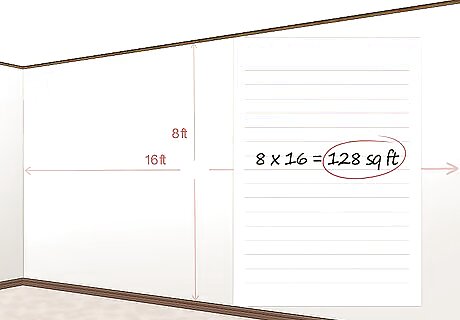
Multiply the width and height of each wall to get its square footage. You’ll want to calculate your wallpaper in square footage, since that is the way you’ll be ordering it. Multiplying your width number times your height number for one wall will give you its square footage. For example, if your wall is 5 feet (1.5 m) x 7 feet (2.1 m), multiply those numbers to get 35 square feet (3.3 m).
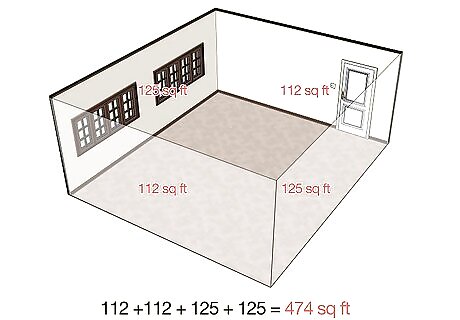
Add the total square footage of each wall to get the square footage of the room. If your wallpaper will be covering an entire room, you’ll want to order it one room at a time, so getting the square footage of each room is important. For example, if you have 3 walls in a room that are all 35 square feet (3.3 m), add 35 square feet (3.3 m) + 35 square feet (3.3 m) + 35 square feet (3.3 m) to get 105 square feet (9.8 m) for the whole room. Some websites have wallpaper calculators to help with these conversions, but they may be inaccurate, so make sure to always check your math.

Subtract any doors and windows from your calculations. Any areas that you won’t be wallpapering can be taken away from your final square footage count. Doors, windows, and cabinets are a few examples of wall fixtures that would not need to be wallpapered. You can measure the width and height of each object and then take that away from your final calculation to avoid buying too much wallpaper. These calculations do not have to be exact and can be done quickly since they are just to help you avoid over-ordering large amounts of wallpaper.
Ordering Your Wallpaper
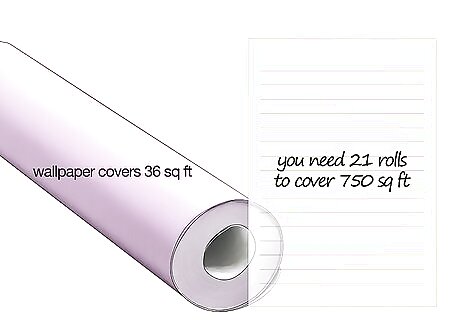
Calculate how many rolls of wallpaper you will need. A roll of wallpaper usually covers between 25 square feet (2.3 m) and 36 square feet (3.3 m). You can calculate how many rolls you will need by finding the exact amount of square footage your wallpaper roll will cover, which is usually listed on a website or in store, and adding those numbers until you cover your entire room square footage. For example, if your room is 50 square feet (4.6 m), and your wallpaper roll has 25 square feet (2.3 m) of usable paper, you will need 3 rolls of wallpaper to cover your entire room and to have some extra left over.

Get more wallpaper than you think you will need to avoid running out. Even if you measure carefully, you may end up needing more wallpaper than you think. You should also add 10% more square feet to whatever you order to account for waste, because you will have to trim your wallpaper around edges and doorways.
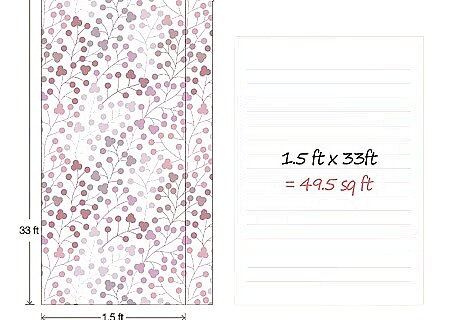
Identify your pattern repeat for complex patterns. If you are buying a wallpaper with a pattern that matches up both horizontally and vertically on your wall, you’ll need to find out the wallpaper’s “pattern repeat.” This number is the distance between the two matching parts of the pattern, and can usually be found on a wallpaper’s website or in store. Once you have this number, all you have to do is multiply the pattern repeat number by the wallpaper roll amount, and you will know how much wallpaper your pattern will need. For example, if your pattern repeat number is 18 inches (46 cm) (or 1.5 feet (0.46 m)), and your wallpaper roll contains 33 feet (10 m), multiply 1.5 feet (0.46 m) by 33 feet (10 m) to get 49.5 square feet (4.60 m). This is how many square feet your wallpaper roll will cover. This type of patterned wallpaper creates the most waste, since you will have to cut a lot off while trying to line up your pattern. Often, these types of wallpapers are installed by professionals, but you can do them yourself with patience and planning.


















Comments
0 comment